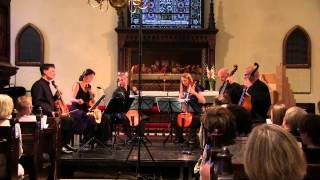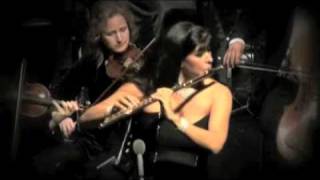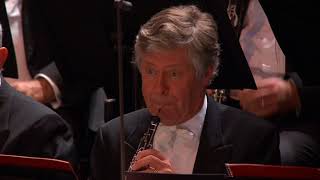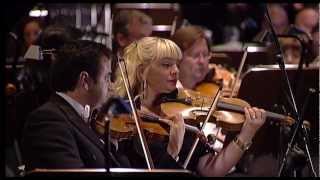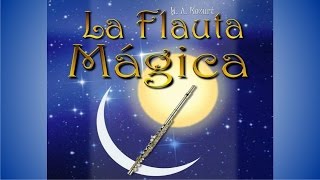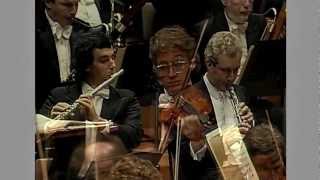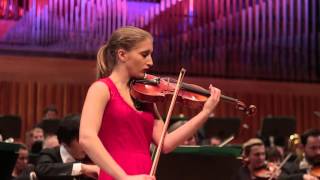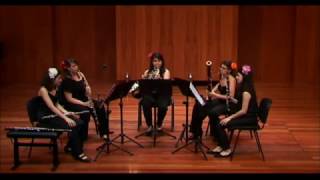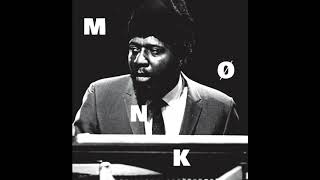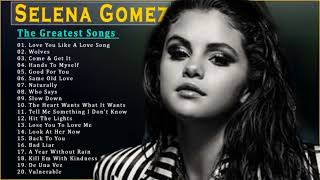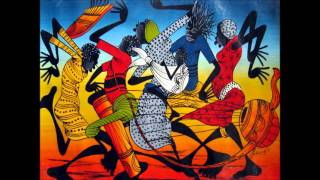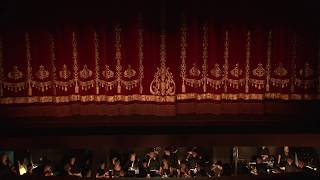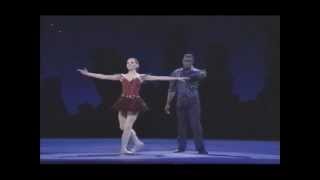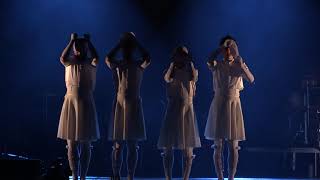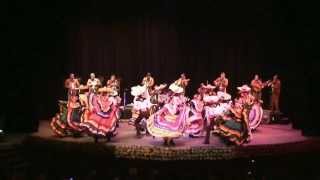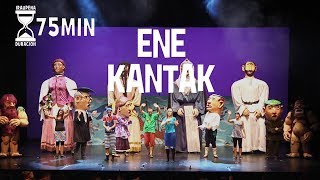Recommended music videos for initiation to classical music
William Byrd (1540-1623) was a British composer, most famous in the late Tudor era (Elizabeth I of England) and the early Stuart era (James I of England). It belonged to the Late Renaissance and cultivated many of the musical genres that existed in England at that time, including various forms of sacred music and secular polyphony, keyboard music and ministerial music. Byrd obtained the prestigious knighthood of the Chapel Royal in 1572, following the death of Robert Parsons . His musical production is about 470 compositions that amply justify his reputation as "great master of the music of the European Renaissance."
The pavane is a court dance in 2/4 or 4/4 fashionable throughout Europe in the Renaissance . It was popular particularly in Italy (as a dance, until the mid- 16th century ), in France and in England (as a concert piece, until the early 17th century ).
The gallarda was a Renaissance musical and dance form, popular throughout Europe in the 16th century . The oldest examples of this dance are preserved in the city of Paris although its origin is Italian. In suites and other works, the galliard often fulfills a "post-dance" role, written in 6/8, which follows and imitates another piece, usually a pavane, written in 4/4. The distinctive 6/8 rhythm can still be heard in songs such as God Save the Queen (UK national anthem).
Christoph Willibald Gluck (1714-1787) was a German composer considered one of the most important opera composers of Classicism (1750-1820). He completely reformed the opera by eliminating the da capo arias , and the extensive dry harpsichord recitatives, replacing them with recitatives accompanied by the orchestra; He dispensed with the castrati and the exhibitionism of the singers, giving greater relevance to the plot, while at the same time elevating the overture, the ballet and the chorus as integral parts of his operas. Among his most valued works are Orfeo ed Euridice (1762) and Alceste (1767) premiered in Vienna , and Iphigénie en Áulide (1774), Armide (1777) and Iphigénie en Táuride (1779) premiered in Paris .
Orpheus and Eurydice is his first opera; Written in three acts, its renewing concerns are reflected, discarding all types of trivial manifestations and highlighting the strength of the plot; To do this, he does not hesitate to use dances and choirs, in addition to what was previously stated. The plot is based on the Greek myth of Orpheus who was able to tame wild beasts with his music and that after the death of his beloved Eurydice , Cupid allows him to go down to hell to rescue her on the condition that on the way back do not turn your head to look at her; Faced with Eurydice 's insistent pleas, Orpheus turns his gaze towards her, thus definitively losing his beloved. Today we offer the prelude to the second act, Dance of the Blessed Spirits , with Viviana Guzmán as solo flute.
Gustav Holst (1874-1934) was a British trombonist, arranger, composer and teacher. He is primarily known for his orchestral suite The Planets , for although he composed many other works in a variety of genres, none achieved comparable success. His distinctive compositional style was the product of many influences, with Richard Wagner and Richard Strauss being the most crucial early in his development. The subsequent revival of English popular song of the early 20th century and the example of emerging modern composers such as Maurice Ravel led Holst to develop and refine his personal style. His compositions had a marked influence on several younger English composers, such as Edmund Rubbra, Michael Tippett and Benjamin Britten .
The Planets is his best-known work and is a suite that consists of seven movements personified in seven planets; It is presented in the manner of a symphonic poem with meanings frequently found in astrology and Greco-Roman mythology.
" Jupiter is the most thoroughly English section of the work, with the high spirits of Jupiter projected through a broad, infectious energetic melody. Then a more serious and stately processional theme enters, after which the vigorous melody returns. ( Excerpt from Orrin Howard's LA Phil article )
Susanna Mälkki (1969) is a Finnish cellist and conductor. He began his musical studies with the violin, piano and cello to devote himself definitively to the latter; he would later study conducting with Esa-Pekka Salonen . As a cellist she has won important awards and for three years she served as first cellist in the Gothenburg Symphony . As a conductor, she has directed important European and American groups and has specialized in contemporary music. She is currently the principal guest conductor of the Los Angeles Philharmonic .
Basil Poledouris (1945-2006) was a film music composer born in Kansas City , USA; He had two influences that led him towards music: the first was the Hungarian composer Miklós Rózsa ( Quo Vadis?, Ben-Hur and El Cid among others) and the second was his Greek Orthodox ancestry. He grew up in church captivated by the sounds of the choir. He began taking piano lessons when he was 7 years old and eventually enrolled at the University of Southern California to study film and music. He gained fame and had numerous successes with the original bands of The Blue Lagoon , Conan the Barbarian , Conan the Destroyer , Red Dawn , RoboCop , The Hunt for Red October , Free Willy , Starship Troopers and Between Love and Play .
Conan the Barbarian is an American sword and sorcery film written and directed by John Milius with music by Poledouris and released in 1982. The film tells the story of a barbarian named Conan who seeks revenge for the death of his parents. at the hands of Thulsa Doom , the leader of a snake-worshipping cult. The story is based on the stories of Robert E. Howard , about the eponymous character and the world of sword and sorcery in which he lived. The leading roles are played by Arnold Schwarzenegger and James Earl Jones . Its soundtrack is considered by many to be one of the best examples of film music ever written.
Recommended classical music videos
Wolfgang Amadeus Mozart (1756-1791) is considered one of the three giants of musical composition along with Bach and Beethoven . Child prodigy born in Salzburg (Austria), at the age of six he mastered the keyboard and violin and began to compose. His father, Leopold, exhibited him on exhausting tours of different European courts. Prolific composer (more than 600 works written from the time he was five years old until his death) he cultivated all types of musical genres: piano works, chamber music, symphonies, concert works, choral works, operas... each and every one of them, masterpieces of its gender. His operas The Magic Flute, Don Giovanni, Cosí fan Tutte, and The Marriage of Figaro are among the 10 most performed operas in the world. He died in Vienna at the age of 35.
The Opera was born at the end of the 16th century , as an initiative of a circle of scholars (the Camerata Fiorentina ) who, upon discovering that ancient Greek theater was sung, had the idea of setting dramatic texts to music. Thus, Jacopo Peri created La Daphne (1597), of which only its libretto is preserved today, which was followed by Euridice (1600), by the same author. In 1607, Claudio Monteverdi composed La favola d'Orfeo , where he added a musical introduction that he called a " symphony ", and divided the sung parts into " arias ", giving structure to modern opera. The subsequent evolution of opera has run parallel to the various musical currents that have occurred over time: between the 17th century and the first half of the 18th century, the Baroque was framed, a period in which cultured music was reserved for the social elites, but which produced new and rich musical forms, and which saw the establishment of a language of its own for opera, rich and complex not only in compositional and vocal methods but also in theatrical and scenographic production.
In the second half of the 18th century , Classicism occurred, a period of great creativity marked by the serenity and harmony of its compositions. The 19th century was marked by Romanticism , characterized, above all, by the individuality of the composer, already considered an enlightened genius and increasingly the object of greater veneration, like the greatest vocal figures of song, who became stars of a society where the bourgeoisie relegated the aristocracy to social preeminence. This century saw the emergence of musical variants from numerous nations until then with hardly any musical tradition, in what came to be called Musical Nationalism . Some currents such as French impressionism and Italian verism closed the century.
In the 20th century , opera, like the rest of music and the arts in general, entered the avant-garde , a new way of conceiving artistic creation in which new compositional methods and techniques emerged, which were expressed in a great variety of styles, in a time of greater diffusion of the media that allowed reaching a wider audience through various channels (radio, television, internet...) and not only in person, and in which it is still valued the extensive musical repertoire of previous periods, which is still current in the main opera houses of the world.
Richard Wagner (1813-1883) was a German composer, conductor, poet, essayist, playwright and musical theorist of Romanticism ; Controversial character for his anti-Semitic ideas and writings such as “Judaism in Music” in which he rants against the musical relationship of Jews with music. In the beginning, his works followed the romantic tradition; but later he transformed musical thought with the idea of the "total work of art" (Gesamtkunstwerk). His capacity for philosophy, literature, music, performing arts, painting and sculpture is transferred to his operas conceived as an exponent of “total art.” With these principles he had the Bayreuther Festspielhaus theater built to be able to perform his own operas, of which in addition to being the author of the music, he was the author of the libretto and the scenery.
The Mastersingers of Nuremberg , with a libretto by Wagner himself, is an opera in three acts and one of his longest operas (approximately four and a half hours long). The story is set in the 16th century city of Nuremberg and centers on an association of amateur poets and musicians, often artisans, who imposed a series of strict rules for the composition and performance of their songs. The work is a tribute to the bourgeoisie of medieval Germany and Bach's counterpoint.
The Overture of the aforementioned opera, which we offer today, is conducted by Klaus Tennstedt (1926-1998), a German conductor specialized in German composers of classicism and romanticism and one of the most considered of his generation in both periods. He trained as a violinist at the Leipzig Conservatory , but a muscle injury forced him to devote himself to conducting. He was musical director of the Dresden Opera , general director of the Kiel Opera , head of the London Philharmonic and conducted major American and European orchestras.
Aram Khachaturian (1903-1978) was an Armenian composer under the Soviet regime. At the age of 22 he began to write his first works for piano and chamber music; later orchestral music, theater and film music (more than 40 works between both genres), as well as ballet music in which the Spartacus ballet and the Gayané ballet are notable, to which the well-known saber dance belongs. He had important disagreements with the Party , being denounced for his “ anti-people music ”, although after Stalin 's death in 1953, he was widely recognized. His music is clear, agile and vibrant, and in his works you can feel the Armenian popular music, to which he was always attracted; In Armenia he is considered its main composer.
Violin Concerto in D m . When the last compositions began to come out of the Soviet Union toward the end of World War II, Khachaturian quickly became an international favorite: a composer who could entertain with lush, oriental-sounding melodies that had the world singing, dancing, and clapping. The cultural curators also applauded, as it was not only music that satisfied the basic requirements of Soviet music, but was in tune, joyful and accessible. And, the icing on the cake: he represented an ethnic minority, the Armenians (in fact, Khachaturian was born to Armenian parents in Georgia ), giving credence to the Soviet Union 's loudly spread claims of inclusion. ( Extracted from LA Phil article)
Today it is offered to us by the virtuoso violinist Eva Sulic accompanied by the Zagreb Philharmonic conducted by maestro Tomislav Fačini
Paquito D'Rivera (1948) is a Cuban jazz musician, clarinetist and alto, tenor and soprano saxophonist. Passionate about both jazz and classical music, one of the main objectives of his work is to make the former an integral part of the latter. Son of the Cuban saxophonist and conductor Tito D'Rivera , he began studying music at the age of five and at seven he was already a child prodigy who performed in public. Among the numerous awards and recognitions he has received throughout his career, seven Grammys in various years, an honorary doctorate in music from the Berklee College of Music and the United States National Medal of Arts stand out.
Today the O´Globo Wind Quintet offers us the Aires Tropicales Suite by Paquito D'Rivera structured in the following seven movements: I (1´10´´) ALBORADA.-. II (1´53´´) SON.-. III (7´20´´) HABANERA.-. IV (10'01'') VENEZUELAN WALTZ.-. V (12'07'') DIZZYNES .-. VI (17´35´´) AFRO.-. VII (21'37'') CONTRADANCE.
Recommended music videos for all tastes
Thelonious Monk (1917-1982) was an American self-taught pianist and jazz composer. Founder of bebop , he also played under the influence of hard bop and modal jazz . He is known for his unique style of improvisation, as well as having composed several jazz standards such as "'Round Midnight", "Straight No Chaser", "52nd Street Theme" and "Blue Monk". In 1937 he formed his own quartet, performing in various clubs until in 1941 drummer Kenny Clarke chose him as the house pianist to play at Minton's Playhouse , the legendary Harlem club where bebop would be spawned. In 1957 he was hired by the Five Spot and there he would be part of a quartet that would also feature the saxophonist John Coltrane .
María Jiménez Gallego (1950-2023) was a Spanish singer, dancer and actress. In his almost fifty-year career he published nineteen albums and acted in more than ten films and television series. For his artistic work, he received numerous awards and recognitions, including the Gold Medal for Merit in Fine Arts awarded by the Spanish Ministry of Culture and the Andalusia Excellent award for lifetime achievement. On September 5, 2023, a CT scan was performed at the Quirón Infanta Luisa hospital. The next day she began to feel very down and gradually faded away. She died in said hospital in Triana , surrounded by her family, on September 7, 2023, at the age of 73. As was the artist's wish, her coffin was carried in a horse-drawn carriage through the Triana neighborhood.
Selena Gómez (1992), American actress and singer born in Texas who began her career in a children's series from the age of ten to twelve; He later continued starring in small roles in other series. In 2007 she starred in the series Wizards of Waverly Place , which won important awards and in 2009, as a singer, she formed her own band with which she won various awards. By 2015, she had sold more than 6.7 million albums and more than 22 million singles.
Africa is a vast continent, with its different regions and nations having a great variety of musical traditions. North African music for the most part has a different history from that of the sub-Saharan region. North Africa is the cradle of Mediterranean culture, including Egypt and Carthage before being successively ruled by Greeks, Romans and Goths and later becoming the Maghreb of the Arab world. Like the musical genres of the Nile Valley and the Horn of Africa , their music has ties to the music of the Middle East .
East Africa and the islands of the Indian Ocean have been lightly influenced by Arabic music as well as by Indian music, Indonesian music and Polynesian music. However, the region's indigenous musical traditions are based on the culture of sub-Saharan peoples such as speakers of Niger-Congo languages.
South, Central and West Africa share a sub-Saharan musical tradition understood in a broad sense, although they also take influences from Western Europe and North America . The musical and dance forms of the African diaspora, including African-American music and many Caribbean genres such as soca, calypso and zouk , as well as Latin American music genres such as rumba and salsa , were based to varying degrees on the music of slaves. Africans, which in time influenced African popular music.
As the caption of the video we present today tells us, “ N'Chant Nguru 's powerful music embodies everything that is Africa . The raw voices set the rhythm of the music and together affirm the wonders of this magnificent continent.”
Recommended peculiar videos
Adolphe Adam (1803-1856) was a French composer born in Paris and author of abundant stage music. His first successes came in his adulthood with the ballet Giselle and the opera Si j'étais roi ; By then he had already written several ballets and operas; In total he wrote 40 operas, 14 ballets and various cantatas, hymns, masses, choirs, piano pieces, pantomimes, military marches and plays; Of all these compositions it is worth highlighting, in addition to those already mentioned, the carol Cantique de Noël, known worldwide, in its English translation, as O Holy Night and the ballet Le Corsaire , which we offer today. From 1849 until his death in 1856 he was professor of composition at the Paris Conservatory .
Le Corsaire (The Corsair) is a ballet in three acts, five scenes and an epilogue with a libretto by Jules-Henri Vernoy de Saint-Georges , inspired by the poem The Corsair by Lord Byron and the opera derived from it The Corsair by Verdi , with music by Adolphe Adam . The original choreography is by Joseph Mazilier and it premiered for the first time in 1856 at the Paris Opera . In 1868, Marius Petipa and Jules Perrot renovated the ballet for the Bolshoi Theater in Moscow . This version is the one from which most subsequent adaptations and productions are derived, such as today's by the Samara Theater ballet company.
George Gershwin (1898 –1937) was an American composer appreciated for having known how to combine jazz with classical music . From a young age he began to write his first songs, premiering his first musical on Broadway with his brother Ira as lyricist, a company that he would never leave. From the age of twenty he began to compose works designed for concert halls with which he obtained renowned successes. Aware of his formal deficits, he traveled to Paris to complete his training with Stravinsky , who, after asking him about the money earned in a year, replied that he was the one who should take classes with Gershwin . Something similar happened to Ravel , as he said, “Why do you want to be a second-rate Ravel , when you can be a first-rate Gershwin ?”
Who Cares? is a ballet created by George Balanchine to the music of 16 songs by George Gershwin with the idea of showing the exuberance of urban life in New York . Today's performance is by the New York City Ballet .
Basque dances (in Basque, Euskal Dantzak ) are a very important part of Basque culture and the fundamental part of its folklore. Each historical territory, or province, has its own and each town also has its own that is customary to dance at its major festivals. Among the most notable dances we will mention the pilgrimage or plaza dances , based on the dances that were celebrated in the pilgrimages and whose participation was and is popular and spontaneous. The sword dances that have an obvious parallel with the European ones of the same type. The end-of-festival dances that are performed to mark the end of some festivities, the end of one cycle and the beginning of another. Traditional dances : Agurra, Fandangoa, Banakoa, Zortzikoa and Arin Arina among many others.
Kukai Dantza is a company that was born and resides in Errenteria (Guipúzcoa-Basque Country), created by the dancer and choreographer Jon Maya Sein , in 2001. With contemporary creation based on traditional dance as its hallmark, it has created numerous shows and successful collaborations. It has promoted encounters with numerous artistic languages (theater, cinema, plastic arts, architecture, gastronomy...) and its shows have been performed in theaters and festivals in more than twenty-five countries, having received notable awards: National Dance Award 2017, MAX Awards the performing arts 2009, 2015, 2017 and 2019, Catalunya Critics Award 2016, Donostia Theater Award , Awards at International Festivals in Huesca, Valladolid… Umore Azoka Honor Award…
Mariachi Vargas de Tecalitlán is a Mexican folk music group created in 1897 by maestro Gaspar Vargas López , (1880-1969), which is currently under the artistic production and general direction of maestro Rubén Fuentes , and whose musical direction It is in charge of Carlos Martínez . The group is made up of a harp, a vihuela, a guitar, a guitarrón, three trumpets and seven violins, and they call themselves The Best Mariachi in the World , a name that Fuentes himself (when he was, in 1956, artistic director of the RCA Víctor ) suggested for the group. In their long career they have performed countless live recitals as well as countless recording works.
Today Mariachi Vargas de Tecalitlán with the Folkloric Ballet of the Technological Institute of La Paz offer us two dances from the State of Jalisco : The Son de la Culebra and the Son de la Negra.
Recommended music videos for children
Various Wikipedia articles have been used to write these texts.
The texts of Videomusicalis are written in Basque, Spanish and English.





